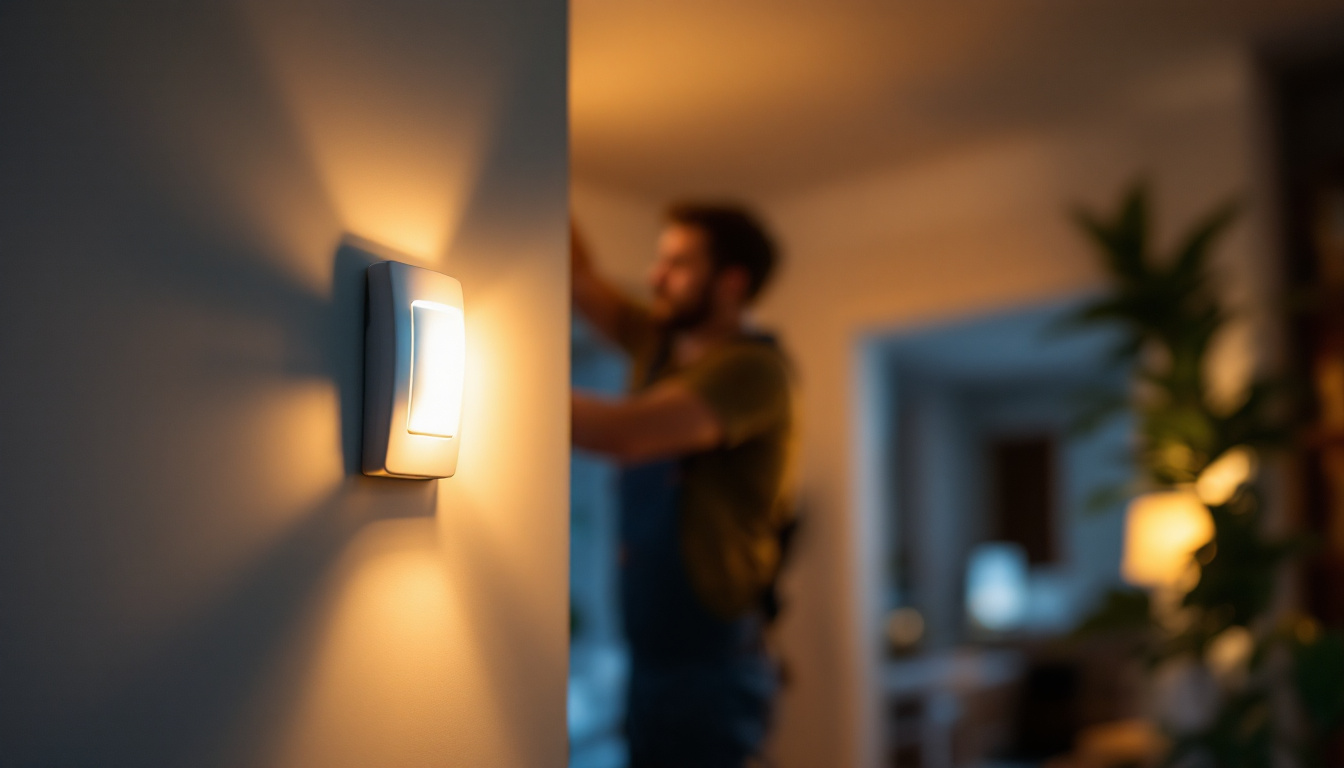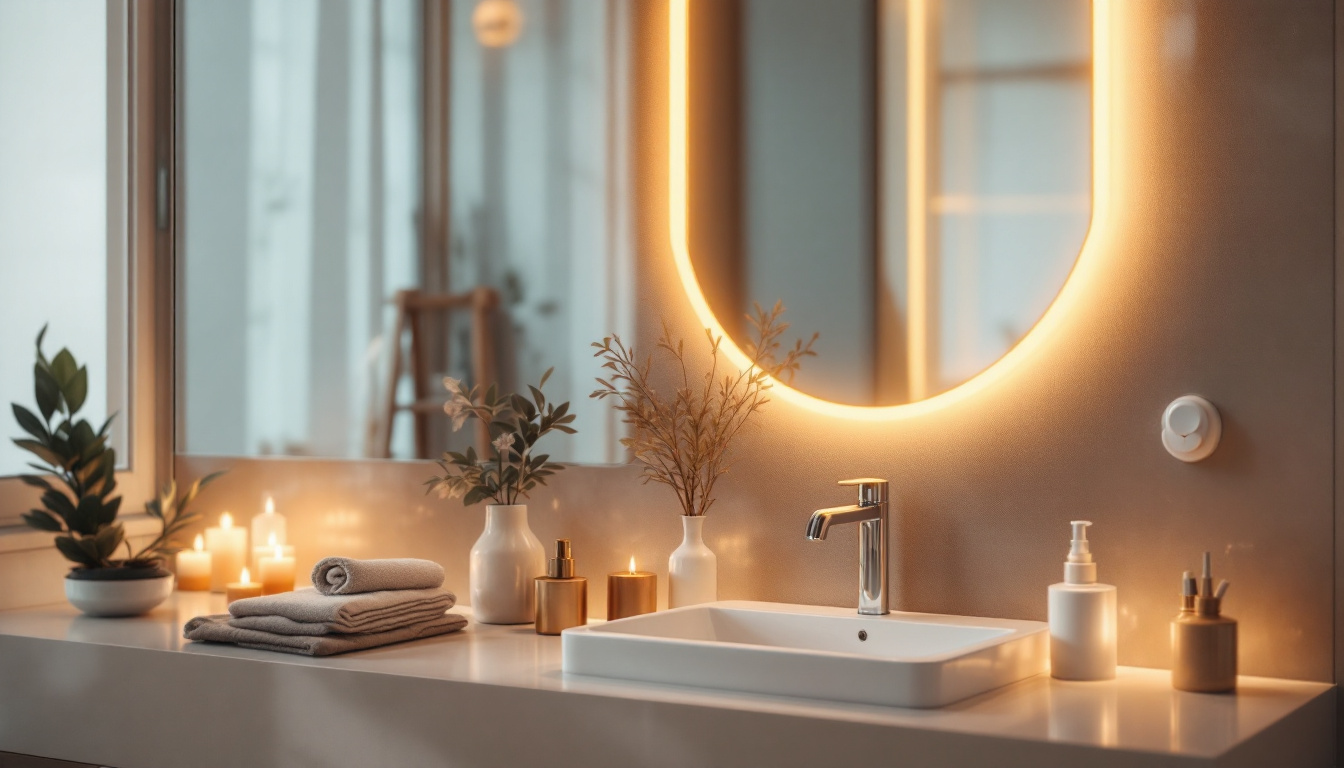

In the evolving landscape of lighting technology, movement sensor switches have emerged as a pivotal tool for lighting contractors. These devices not only enhance energy efficiency but also improve user convenience and safety. Understanding the significance of movement sensor switches is essential for contractors aiming to stay competitive and meet the growing demands of clients.
Movement sensor switches are devices that automatically turn lights on or off based on the detection of motion. They utilize various technologies, including passive infrared (PIR), ultrasonic, and dual-technology sensors, to identify movement within a designated area. This capability makes them particularly valuable in both residential and commercial settings.
There are several types of movement sensors available, each with its unique benefits and applications. Understanding these types can help lighting contractors choose the right solution for specific projects.
Movement sensors operate by continuously monitoring their environment for changes. When a sensor detects motion, it sends a signal to the lighting system to activate or deactivate the lights. This process typically involves a time delay, allowing lights to remain on for a specified duration after the last detected motion.
The integration of these sensors into lighting systems can significantly reduce energy consumption, as lights are only active when needed. This not only lowers electricity bills but also contributes to environmental sustainability, a growing concern among clients.
Moreover, movement sensors can enhance security in both residential and commercial spaces. For instance, outdoor sensors can illuminate pathways and entry points when someone approaches, deterring potential intruders and providing safety for residents and visitors alike. In commercial settings, these sensors can be programmed to activate lighting in response to employee movement, ensuring that workspaces are well-lit during operating hours while saving energy during off-peak times.
Additionally, advancements in smart technology have led to the development of movement sensors that can be integrated with home automation systems. These smart sensors can be controlled remotely via smartphone apps, allowing users to customize settings, monitor activity, and receive alerts when motion is detected. This level of control not only enhances convenience but also provides peace of mind, making movement sensor switches an increasingly popular choice in modern smart homes.
For lighting contractors, incorporating movement sensor switches into projects can lead to numerous advantages. These benefits extend beyond energy savings, impacting customer satisfaction and project efficiency.
One of the most compelling reasons to use movement sensor switches is their ability to enhance energy efficiency. By ensuring that lights are only on when necessary, these devices can significantly reduce energy consumption. This reduction translates into lower utility bills for clients, making it an attractive selling point for contractors.
Moreover, many regions offer incentives for energy-efficient installations. Contractors who promote movement sensor switches may find themselves eligible for rebates or tax credits, further enhancing their profitability. In addition to immediate financial benefits, these energy-efficient solutions contribute to a more sustainable future, aligning with the growing trend of eco-conscious consumerism. Clients are increasingly looking for ways to minimize their carbon footprint, and by integrating movement sensor technology, contractors can position themselves as leaders in sustainable practices.
Movement sensor switches also contribute to improved safety and security in both residential and commercial settings. For instance, outdoor lighting that activates upon detecting motion can deter potential intruders and provide illumination for homeowners returning at night.
In commercial spaces, well-lit areas can reduce the risk of accidents, particularly in parking lots or stairwells. By highlighting the safety benefits of movement sensor switches, contractors can appeal to clients’ concerns about security and liability. Furthermore, these sensors can be integrated with advanced security systems, allowing for real-time alerts and monitoring. This added layer of security not only enhances the safety of the premises but also provides peace of mind to clients, knowing that their properties are well-protected against unforeseen incidents.
Clients appreciate the convenience that movement sensor switches offer. Homeowners no longer need to fumble for light switches in dark hallways or rooms, while businesses can ensure that employees have adequate lighting without manual intervention.
This ease of use enhances the overall user experience, making it a key selling point for contractors. By emphasizing the convenience factor, contractors can differentiate themselves in a competitive market. Additionally, these sensors can be programmed to adjust lighting levels based on the time of day or occupancy patterns, further optimizing energy use and creating a tailored environment for users. This level of customization not only enhances comfort but also reflects a modern approach to lighting design, appealing to tech-savvy clients who value innovation in their homes and workplaces.
While the benefits of movement sensor switches are substantial, lighting contractors must also be aware of potential challenges and considerations when integrating these systems into their projects.
Installing movement sensor switches can be more complex than traditional lighting systems. Contractors must ensure that sensors are correctly positioned to avoid blind spots and false triggers. This may require additional planning and expertise, particularly in larger spaces.
Moreover, understanding the specific requirements of different sensor types is crucial. For example, PIR sensors may not be suitable for areas with frequent movement from pets, while ultrasonic sensors might be overkill for smaller rooms. Contractors must assess the environment to choose the right sensor for each application.
While movement sensor switches can lead to long-term savings, the initial investment may be higher than traditional lighting solutions. Contractors need to communicate the value of these devices to clients, emphasizing the return on investment through energy savings and enhanced safety.
Additionally, contractors should consider the overall budget of the project. Balancing the cost of movement sensor switches with other project expenses is essential to ensure client satisfaction and project viability.
Educating clients about the functionality and benefits of movement sensor switches is crucial for successful installations. Many clients may be unfamiliar with how these devices work or may have misconceptions about their reliability.
Contractors should take the time to explain the technology, addressing any concerns clients may have regarding false triggers or sensor limitations. Providing demonstrations or case studies can also help clients understand the practical applications and advantages of movement sensor switches.
To maximize the benefits of movement sensor switches, lighting contractors should follow best practices during installation and integration. These practices can ensure optimal performance and client satisfaction.
Before installation, conducting a thorough site assessment is essential. This assessment should include evaluating the layout of the space, identifying potential obstacles, and determining the expected traffic patterns. By understanding the environment, contractors can position sensors effectively for maximum coverage.
Additionally, assessing the lighting needs of the space will help determine the appropriate type of sensor and lighting fixtures to use. This comprehensive approach ensures that the final installation meets both functional and aesthetic requirements.
As previously mentioned, selecting the appropriate sensor type is critical for successful implementation. Contractors should consider factors such as the size of the area, the type of movement expected, and the potential for interference from other objects.
For example, in a large warehouse, a dual-technology sensor may be the best choice to ensure comprehensive coverage. In contrast, a small bathroom may only require a simple PIR sensor. Tailoring the solution to the specific needs of each project will enhance performance and client satisfaction.
Once installed, testing the movement sensor switches is vital to ensure they function as intended. Contractors should walk through the area to verify that sensors detect motion accurately and that lights activate and deactivate as expected.
Adjusting the sensitivity settings may also be necessary to minimize false triggers while ensuring reliable operation. Taking the time to fine-tune these settings can prevent client complaints and enhance the overall user experience.
The technology behind movement sensor switches continues to evolve, with advancements promising even greater efficiency and functionality. Staying informed about these developments is essential for lighting contractors looking to remain competitive in the industry.
One of the most significant trends in lighting technology is the integration of movement sensors with smart home systems. As homeowners increasingly seek automation solutions, contractors should consider offering sensors that can be controlled via mobile apps or integrated with other smart devices.
This integration allows for greater customization and control over lighting, enhancing user convenience. Contractors who can provide these advanced solutions will likely attract tech-savvy clients looking for modern lighting solutions.
Future advancements in sensor technology may lead to even more sophisticated devices. For example, sensors that can differentiate between types of movement or adjust lighting based on ambient light levels could become commonplace.
Contractors should keep an eye on emerging technologies and be prepared to adapt their offerings to include these innovations. By staying ahead of the curve, contractors can position themselves as leaders in the lighting industry.
Movement sensor switches represent a significant advancement in lighting technology, offering numerous benefits for both contractors and clients. By understanding the various types of sensors, their advantages, and best practices for implementation, lighting contractors can enhance their service offerings and improve client satisfaction.
As the industry continues to evolve, staying informed about new technologies and trends will be crucial for success. By embracing movement sensor switches and integrating them into projects, contractors can not only meet the demands of today’s clients but also prepare for the future of lighting.
Ready to elevate your lighting projects with the latest movement sensor technology? Look no further than LumenWholesale for all your lighting needs. Our extensive selection of spec-grade lighting products, including state-of-the-art movement sensor switches, is available at unbeatable wholesale prices. Say goodbye to inflated markups and hello to high-performance lighting that meets the highest industry standards. Plus, with free shipping on bulk orders, you can stock up on quality lighting solutions without worrying about hidden fees. Don’t compromise on quality or value—visit LumenWholesale today and discover the perfect blend of quality, affordability, and convenience for your next project.

Discover the essential insights lighting contractors need to know about LED mirrors.

Discover how LED lighting solutions can transform your warehouse into an energy-efficient powerhouse.

Discover essential insights for lighting contractors on hospital bed lights, including design considerations, regulatory standards, and the latest innovations to enhance patient care and safety..

Discover why sourcing architectural linear lights in bulk from local distributors might not be the best choice.
Get notified when NEW deals are released.
Optimize your budget with wholesale discounts.
Only top-quality, specification-grade lighting products.
No additional costs at checkout - what you see is what you pay.
We understand the unique needs of contractors.